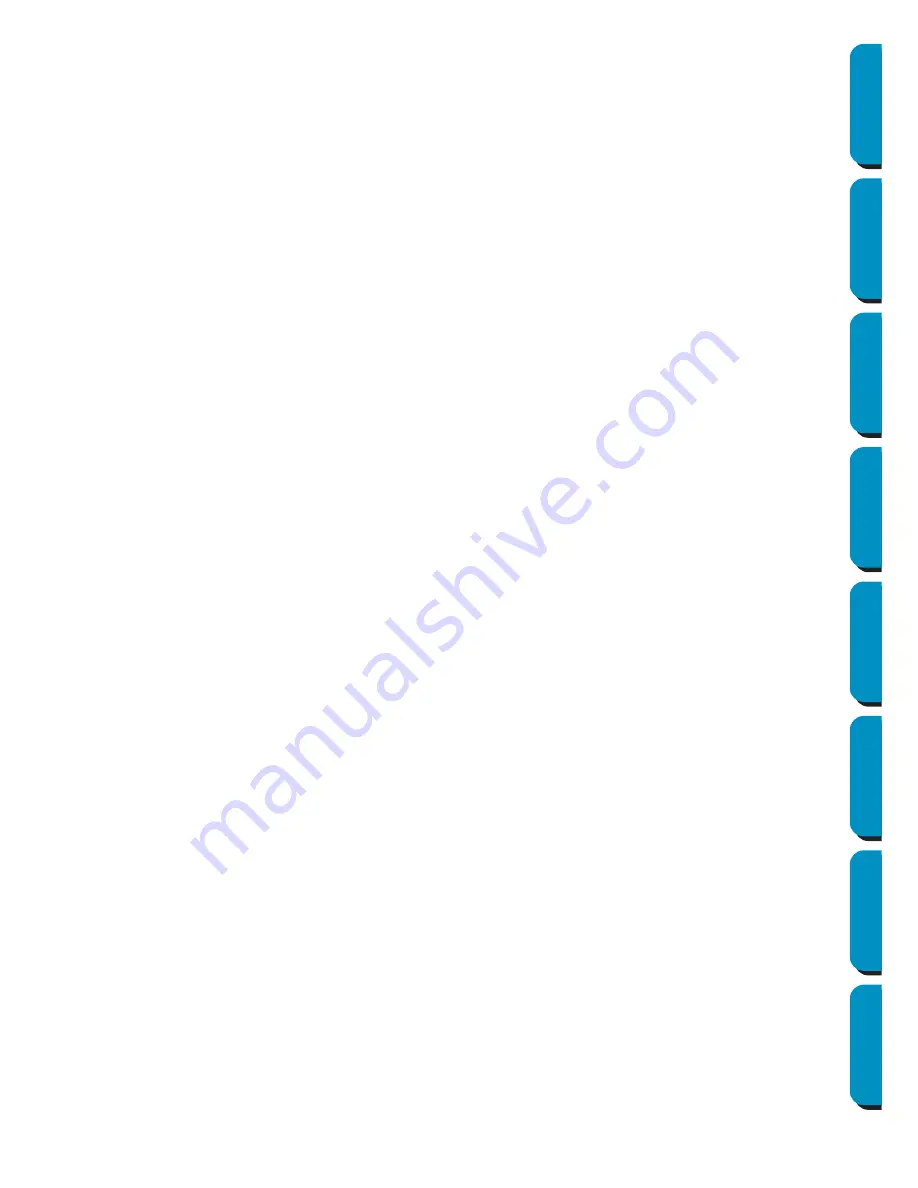
10
Contents
Before Using
Getting Started
Design Center
Layout & Editing
Programmable
Stitch Creator
Quick Reference
Alphabetic Index
◆
Embroidery patterns created with Design Center
◆
Embroidery patterns on Embroidery cards purchased from your dealer (Note that some patterns can-
not be read.)
◆
Embroidery patterns in the Tajima, Melco, Pfaff and Husqvarna formats
◆
Patterns created within Layout & Editing itself (These patterns include text, circles and related
shapes, rounded boxes, polygonal lines, curves and manual punching patterns.)
After gathering the different components of your embroidery picture, you can use the layout functions to
modify their relative position, orientation and scale.
When an embroidery image is complete, you can save it (the file name extension will be
pes
) and write it
to an Original card. The Original card can then be inserted into your sewing machine and the embroidery
process continued.
■
Design Center
Design Center is used to manually create embroidery patterns from images. The images may come from
scanning a printed image or can be created with an application like Paint
. The extension of the image
files must be
bmp
,
tif
,
jpg
,
j2k
,
pcx
,
wmf
,
png
,
eps
,
pcd
, or
fpx
. Design Center automatically detects out-
lines in the image and replaces them with broken lines that can be edited and assigned sewing
attributes.
The procedure is divided in four stages:
◆
Stage 1 – Original Image
: You open the image file and select one or more colors that the application
will use to retrace the outlines.
◆
Stage 2 – Line Image
: The original color image is replaced with a black and white image (the colors
selected in Stage 1 become black, and all the other colors become white). You can edit this image
using pens and erasers of different thicknesses. (You can also start at this step and draw a complete
black and white image by hand.)
When the image is ready, you set and start the automatic retracing process.
◆
Stage 3 – Figure Handle
: The black and white image is replaced with a set of outlines made of edit-
able broken lines. You can edit the broken lines by moving, inserting or deleting points.
◆
Stage 4 – Sew Setting
: In this final step, you apply sewing attributes (thread color and stitch type) to
the outlines and regions inside.
At any stage, you can save your work to retrieve it later. Up to stage 2, the file will be saved with the
extension
pel
. In stages 3 and 4, the file will be saved with the extension
pem
.
Saving your work as you move through the stages will be helpful if you make changes, then later decide
to use the original pattern.
When your image has reached stage 4, you can import it in Layout & Editing. The image will be consid-
ered a single object by Layout & Editing, which means that you will be able to move and scale it, but you
will not be able to edit the outline. You can however change the pattern and some of the sewing attributes
after applying the Stitch to Block function.
■
Programmable Stitch Creator
Programmable Stitch Creator allows you to create, edit and save fill stitch patterns, which you can apply
to the enclosed regions of patterns, both in Design Center and Layout & Editing. The fill stitch pattern
files are saved as
pas
files. The application comes with a number of
pas
files, which you can use as such
or edit to enhance your embroidery patterns.






























